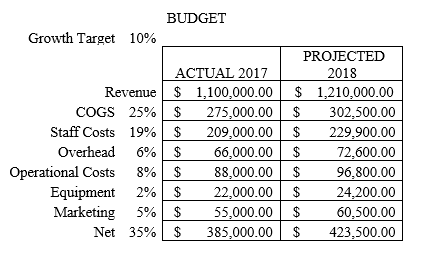
Research suggests that around 39 percent of adults consult an eye care professional once a year. While an eye visit is a routine consumer activity, getting your share of the right types of patients is anything but ordinary. And, doing so on a small budget is even more challenging.
Marketing your optometry business involves a careful analysis of marketing strategies and organizing a well thought-out marketing plan. Here is how you can attract and retain your ideal patient on a budget:
Benefits of Targeting the Ideal Patient
To make your optometric practice more effective and cover all your costs, it is imperative that you use relevant marketing tactics to attract the ideal type of patients. With the right patients coming in, you will be able to:
· Earn a higher return on investment
· Understand patient needs better
· Market your services in a cost-effective manner
Being able to target the right client base through better marketing strategies will enable your clients to have a better understanding of what services to expect. Having a good idea of what your customers want will also help you add value to your products and services.
There are 2 simple steps to identify the ideal target market:
1. Marketing Segmentation
Analyze the primary characteristics of your ideal patient. Start with segmenting the market intodemographic, psychographic, geographic and behavioural categories. Evaluate where your target market stands in order to move closer to achieving a holistic overview of your ideal patient.
2. Patient Persona
Once you have completed segmenting the market, you are bound to have a good idea about your ideal patient. Ask yourself what kind of patients you enjoy working with the most. List down some common attributes based on health attitudes, income, occupation, interests, habits, age and method of payment.
Figuring out the ideal patient does not mean you should refuse to treat those who do not meet your criteria. The goal is to make your business more profitable by prioritizing quality over quantity.
Marketing Tactics to Attract and Retain Your Ideal Patient
Good marketing strategies for your optometric practice do not have to be expensive; they just need to be efficient. You should aim to market your products and services in a way that they provide valuable information to your target audience while increasing brand loyalty.
You can easily minimize your budget once you figure out details regarding your ideal patient and optimize your marketing tactics and spending accordingly.
Both traditional marketing and online marketing strategies are likely to benefit your business as long as you ensure you pick and choose the right ones based on the clientele you wish to attract and retain.
Conventional Marketing
Although the internet is gaining popularity as a marketing platform, it has not yet eliminated the need for conventional marketing practices. Some vital tactics include:
1. Referral program
A patient referring your practice to other people is not only an efficient marketing strategy but is also a compliment as it assures you that you are doing your job well.
Start a referral program by offers such as a voucher, discount, gas card or lucky draw token. This is a good way to show your appreciation and promote your services.
2. Take out time for local charities
Strengthen your brand loyalty by joining charities. This will help build trust and establish the reliability of your optometry practice.
When patients notice your efforts to give back to the community, they will hold you and your practice in higher regard.
3. Broadcast or outdoor ads
An eye-catching advertisement or an infectious jingle will not fail to get noticed. Radio is an effective and reasonable medium to tap the local market.
A well-designed billboard ad is also likely to be retained by people. Whenever they will feel the need to consult an optometrist, they may recall your advertisement.
Online Marketing
In this day and age, the scope of digital marketing is growing tremendously. Having a noticeable online presence allows you to attract a large customer base and is easy on the pocket.
1. Email Marketing
Keep sending emails to your clients from time to time to reinforce their preference for your products and services. Ask people for their email addresses when they register with your services.
You can email people about new offers, newsletters, and reminders for yearly check-ups. Moreover, you can also market in subtle ways by sending out informative emails regarding eye health.
2. Website and SEO
Focus on developing a website that is designed well and provides visitors with valuable information about your products and services. When patients search for an optometrist’s services, they are bound to use a search engine rather than a traditional phonebook, which is why it is important to have an effective and professional online presence.
Make sure the visitors on your website enjoy a good user experience. In order to be visible to the right kind of users, your website must be optimized for search engines.
Search Engine Optimization (SEO) is a process that ensures that the site is structured in a way to rank higher on the search engine results page. It involves tweaking your website to increase its loading speed, making it mobile-friendly and placing visible calls-to-action to convert visitors into customers. Consider hiring an expert.
3. Social Media Marketing
The latest findings show that as many as 2.7 billion people are active on Facebook every month. The importance of maintaining your presence on social media cannot be overstated.
Make sure you are visible to your target audience on leading social networks such as Facebook, Instagram, and Twitter. Routinely update your clientele about new offers and practices to keep them engaged.
Choose your marketing platforms wisely in order to attract and retain your ideal patient. Both conventional marketing and digital marketing avenues can be used in a cost-effective manner one you have a clear idea of your target audience and the way to reach them.
References:
1. Statista https://www.statista.com/statistics/917000/optometrist-ophthalmologist-visit-frequency-among-adults-us/
2. Statista https://www.statista.com/statistics/264810/number-of-monthly-active-facebook-users-worldwide/

MARIA SAMPALIS
is the founder of Corporate Optometry, a peer-to-peer web resource for ODs interested to learn more about opportunities in corporate optometry. Canadian ODs and optometry students can visit www.corporateoptometry.com to learn more.









 By laying out a budget, and managing it diligently, you will be able to anticipate how much money you can expect to earn this year by making great decisions that adhere to your budget.
By laying out a budget, and managing it diligently, you will be able to anticipate how much money you can expect to earn this year by making great decisions that adhere to your budget.